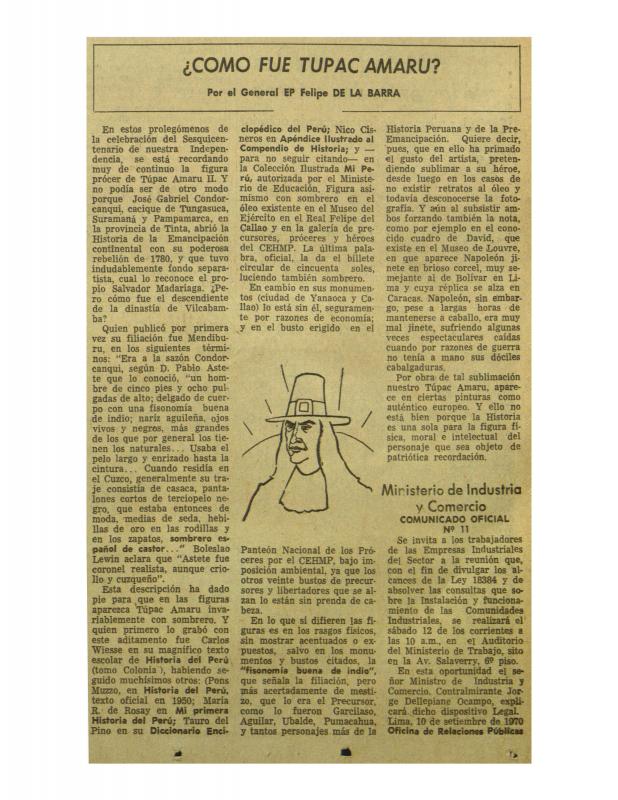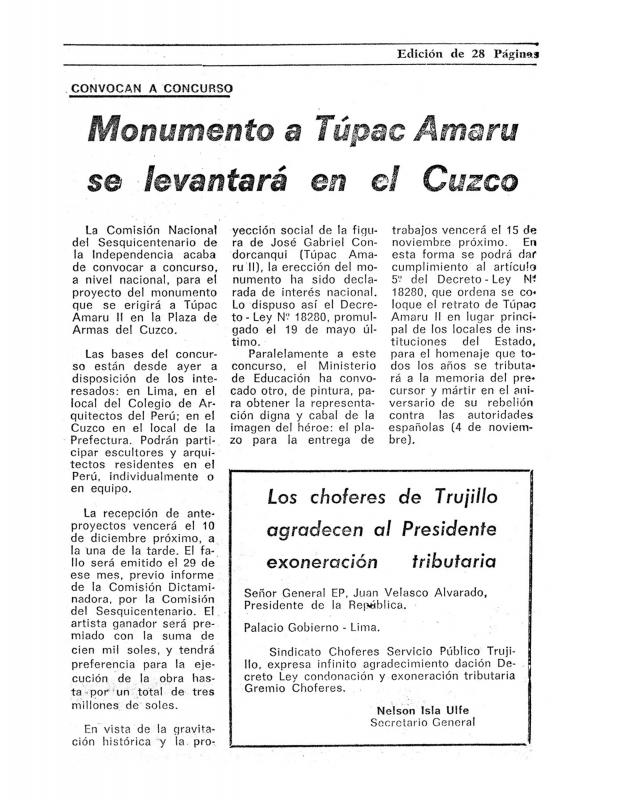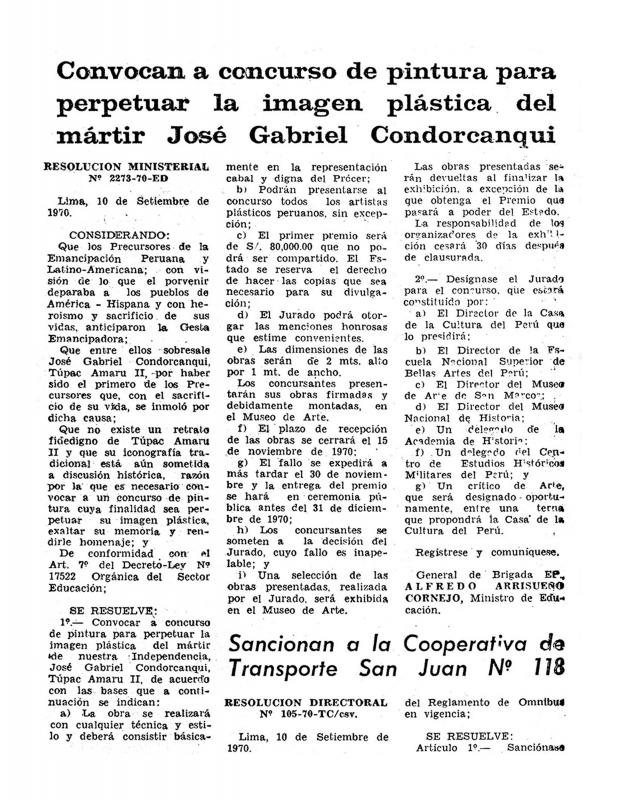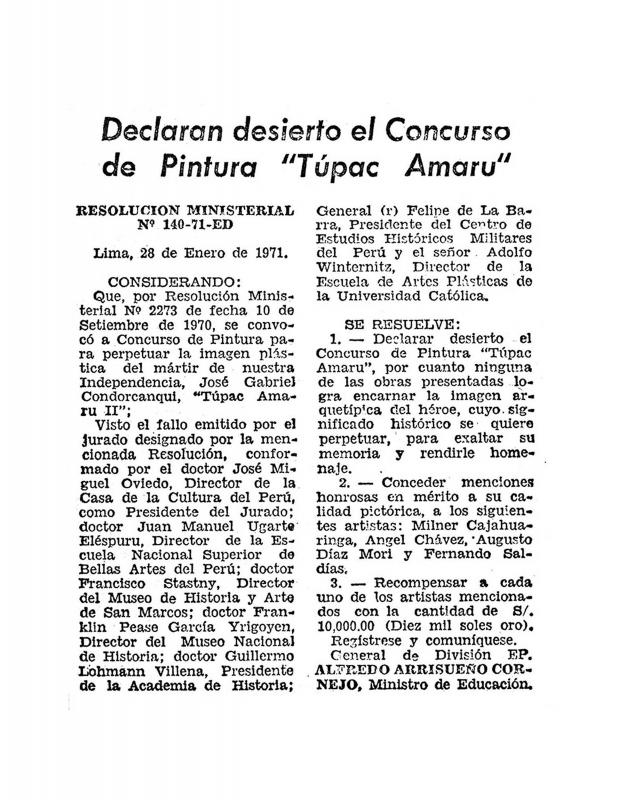Carlos Daniel Valcárcel (1911–2007) began the controversy around the official image of Túpac Amaru II with a paper he delivered at the thirty-ninth Congreso Internacional de Americanistas, held in August 1970. The question of whether or not the indigenous leader wore a hat was not a minor concern since the graphic representations of Túpac Amaru II, a “hatted” image by artists and designers such as Jesús Ruiz Durand (b. 1940), would become key to understanding the political uses of artistic creation. It is striking that Valcárcel voices this position in an article published in Expreso, a newspaper that had been confiscated by the military regime just a few months before, in March 4, 1970.
José Gabriel Condorcanqui, Túpac Amaru II (1738–81), was a curaca or chief of Incan descent who, in 1780, led the most important Andean uprising against the Spanish empire. Largely ignored by traditional Spanish-American historiography, his figure was the emblem of the so-called Gobierno Revolucionario de las Fuerzas Armadas during its first phase (1968–75), which was characterized by social reform and by an interest in symbolic representation.
[For further reading on Túpac Amaru II, see the following articles in the ICAA digital archive: by General EP Felipe de la Barra “¿Cómo fue Túpac Amaru?” (doc. no. 865441); (unsigned) “Convocan a concurso: monumento a Túpac Amaru se levantará en el Cuzco” (doc. no. 1053438); by Alfredo Arrisueño Cornejo “Convocan a concurso de pintura para perpetuar la imagen plástica del mártir José Gabriel Condorcanqui” (doc. no. 865422), and “Declaran desierto el Concurso de Pintura ‘Túpac Amaru II’” (doc. no. 865498); (unsigned) “En busca de la imagen arquetípica de Túpac Amaru” (doc. no. 865702); and by A. O. Z. “Túpac Amaru: ¿verdadero retrato?” (doc. no. 865460)].






